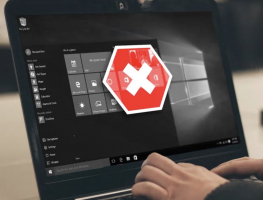Top 5 Best Ways to Show Compassion in the Classroom
Compassion shouldn’t be confused with empathy. Empathy causes people to “take the perspective of and feel the emotions of another”, and compassion is “when ... read more...those feelings and thoughts include the desire to help”. Additionally, compassion can be more sustainable, while empathy can burn you out. So how can people show compassion in the classroom? Let's find out the best ways to show compassion in the classroom below!
-
Most teachers have a zoom room that they open up if students aren’t present in the classroom. If they are online, teachers have classes. If not, teachers can close it and mark them absent.
As teachers faced pupils in quarantine during the covid-19 period, they invented a new attendance code, "PZ", for the present in the zoom, so that attending virtually would not count against students. Students are absent for a variety of reasons, and allowing them to return to class without expecting an explanation allows them to take a deep breath and learn without worrying about what to say to their peers or the teacher.

via: Barco 
via: Zoom Blog -
People must relate in order to educate, thus teachers must find methods to engage with pupils from the start of each class day. When pupils enter a face-to-face classroom, the teacher stands at the door. The teacher calls them by name and looks them in the eyes to notice changes.
In zoom, teachers have to greet students differently. After the students in the class have finished their work, the teacher has zoom time with the students who are online. They turn on cameras if they are willing. If not, they can converse or even send private messages. They understand that the teacher does not need to know why they are absent, but the teacher does want to know how they are doing. Most students want their teachers to ask how they are doing. It makes a difference, and students are aware that teachers care.

via: RMIT University 
via: RMIT University -
After all breaks, teachers can do a quick private poll/mood check with students. Teachers typically ask a few questions, such as "how glad are you to be back at school today?", "how glad were you to be on break?", "how do you explain the difference?". Sometimes teachers can use emojis for student moods.
Thanks to this poll, students can share a variety of experiences with teachers that have assisted teachers in better relating to them, becoming better teachers, and creating a safer classroom atmosphere. Compassion entails not just knowing how someone feels but also acting to improve the situation if it is within their power to do so.

via: Poll Everywhere blog 
via: RMIT University -
One of the most upsetting experiences a youngster may have is when their absence goes unnoticed. Knowing that you matter to others is a basic requirement. So, if a pupil is absent, the teacher should inquire whether anyone has checked on them. If no one has checked, the teacher should request that a student retrieve their phone and check on their friend.
Because loneliness is increasing while the social connection is declining, teachers should consider developing social ties with students who are out as an act of compassion. Every kid must understand that they are important to both their teacher and their classmates.

via: Edutopia 
via: WorksheetCloud -
If the day's classwork is completed, the teacher can allow time at the end of class for pupils who are physically present to mingle with those who are not. If pupils are assigned to groups, the children at home are assigned to teams just like everyone else. While teachers could use breakout rooms, their pupils prefer individual facetime, which they do while propped up on the table and become part of the group. This makes everything feel more normal.
Furthermore, teachers might include activities like "think, pair, share" (in which students think about a question or discussion topic, debate it with a peer, and report back to the larger group) that allow students to ask and learn about one another. Teachers consider setting up message boards in virtual settings to allow students to connect more informally during class at a specified time or asynchronously (outside of class time).

via: Inclusive Schools Network 
via: Inclusive Schools Network

























